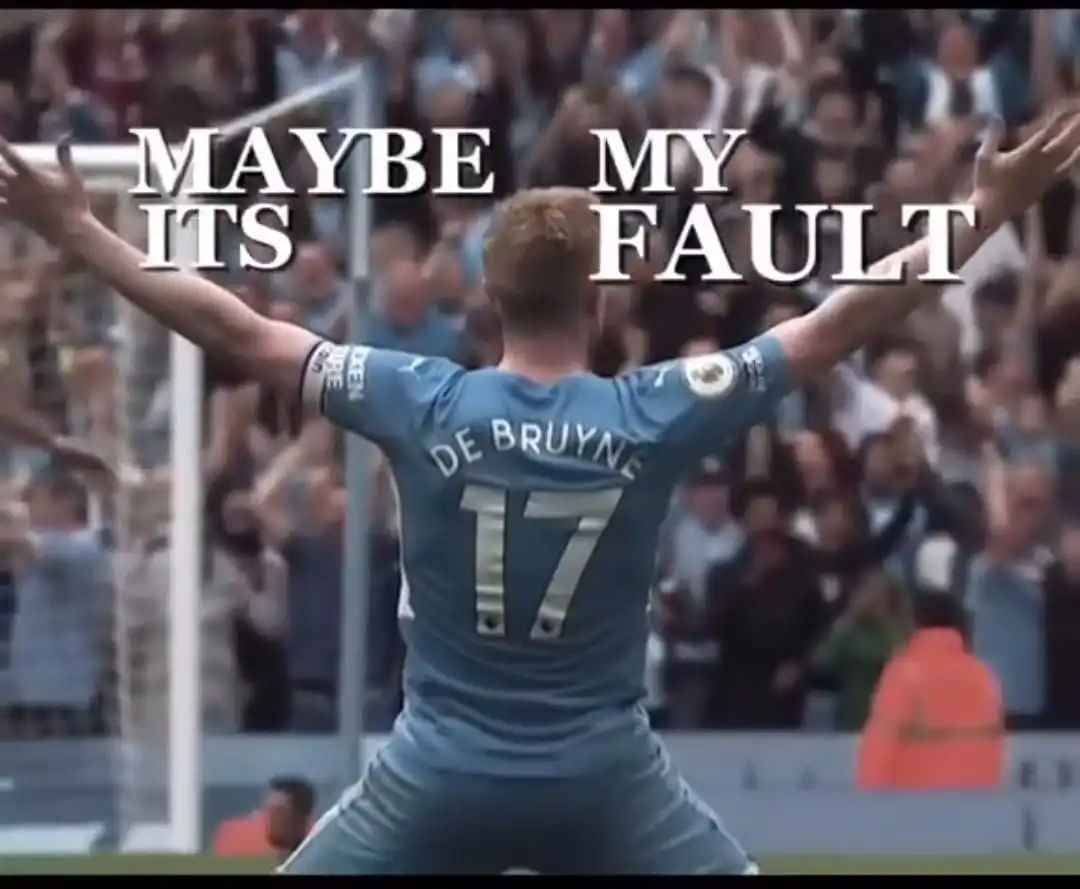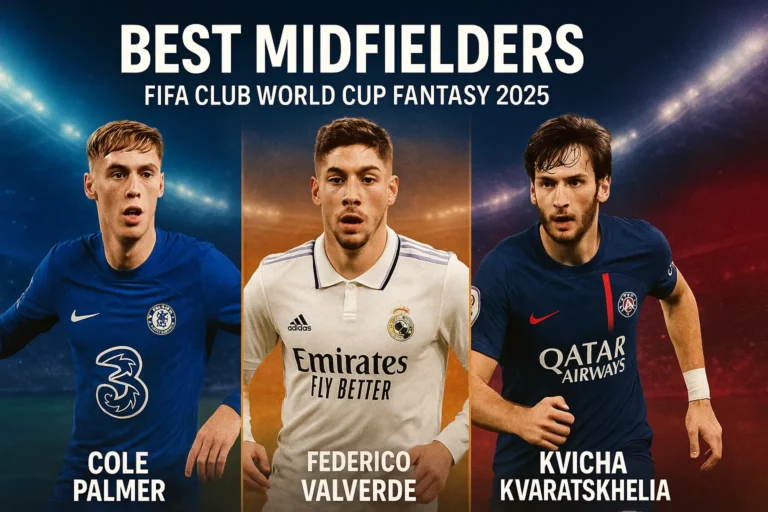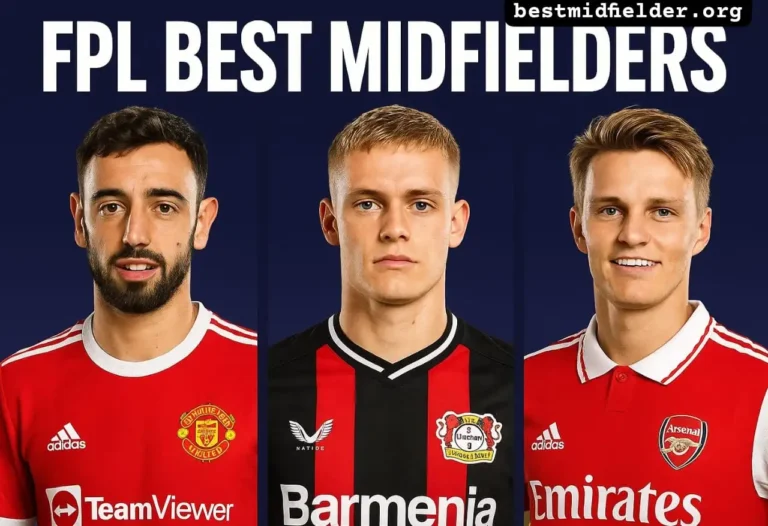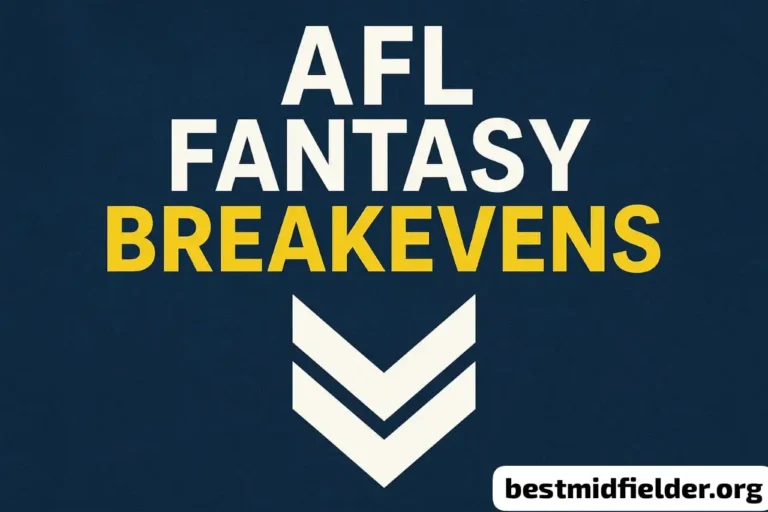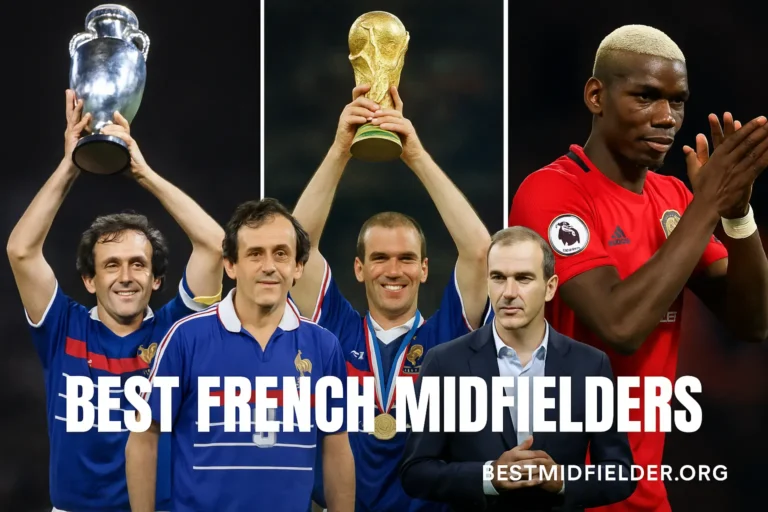The Definitive Guide of how to choose the best midfielder: Timeless Principles for Tactical Dominance
How to Choose the Best Midfielder for Your Team
In the intricate chess match of modern football, control the midfield, control the game. It’s the engine room, the strategic heartbeat, and the difference between mere participation and consistent victory. Choosing the best midfield configuration isn’t about chasing fleeting trends or assembling a collection of expensive stars; it’s a disciplined exercise in tactical alignment, functional balance, and player synergy. This comprehensive guide delves into the time-tested, fundamental principles for constructing a dominant midfield unit capable of executing your vision and propelling your team to success. Forget gimmicks; embrace the enduring foundations of midfield mastery.
Why Your Midfield Choice is the Ultimate Tactical Decision
The midfield dictates the rhythm, character, and ultimately, the effectiveness of your entire team. A poorly constructed midfield creates tactical instability, defensive vulnerability, and attacking impotence. Conversely, a well-chosen unit provides:
- Defensive Solidity: Shielding the backline, breaking up opposition attacks.
- Controlled Build-Up: Progressing the ball securely from defense to attack.
- Chance Creation: Unlocking stubborn defenses with incisive passing and movement.
- Game Management: Dictating tempo, conserving energy, seeing out results.
- Tactical Flexibility: Adapting formations and approaches mid-game.
Ignoring midfield balance is the single biggest tactical error a manager can make. It renders even world-class attackers isolated and starved of service, while exposing defenders to relentless pressure.
The Foundational Pillar: Defining Your Non-Negotiable Tactical Identity
Before considering a single player, you must crystallize your core footballing philosophy. This is the bedrock upon which your midfield is built. Ask yourself with ruthless honesty:
- What is our primary objective with the ball?
- Dominant Possession: Patient circulation, breaking down low blocks (e.g., Pep Guardiola’s Manchester City, peak Barcelona).
- Rapid Verticality: Fast transitions, direct passes behind defenses (e.g., Jurgen Klopp’s Liverpool, Atletico Madrid counters).
- Defensive Solidity & Counter: Deep block, absorb pressure, explosive counters (e.g., Jose Mourinho’s Chelsea/Inter, Diego Simeone’s Atletico Madrid).
- High-Pressing Intensity: Win the ball high, suffocate opponents (e.g., Klopp’s Dortmund/Liverpool, Julian Nagelsmann’s Leipzig/Bayern).
- What is our primary formation structure?
- 4-3-3 (Single Pivot): Requires an elite, multi-functional #6.
- 4-2-3-1 (Double Pivot): Offers greater defensive stability, two controllers.
- 4-4-2 (Diamond): Central overload, demands immense work rate from wide midfielders.
- 3-5-2 / 5-3-2: Relies heavily on wing-backs, needs robust central trio.
- 4-1-4-1: Clear separation between defense, midfield anchor, and attack.
- What are our absolute non-negotiable player attributes?
- Work Rate & Stamina: Non-stop running, pressing, recovery.
- Tactical Discipline: Holding position, understanding roles.
- Technical Security: Reliable first touch, short passing under pressure.
- Physical Presence: Aerial duels, strength in challenges.
- Creative Risk: Willingness to attempt line-breaking passes.
Your tactical identity dictates the functions your midfield must perform, not just the positions they occupy. Trying to fit square pegs into round holes guarantees failure.
Decoding Midfield Roles: Functions Over Fancy Names
Modern football demands hybrid playersby whch, but understanding the core functions is essential for achieving balance. Think in terms of the primary responsibilities each player must fulfill within your system:
- The Anchor / Destroyer (Primarily #6)
- Function: Protect the center-backs, break up opposition attacks, shield the defensive zone. The ultimate insurance policy.
- Key Attributes: Elite positional awareness, anticipation, tackling (timing & strength), interceptions, aerial ability, composure under pressure, simple & efficient short-medium passing. Low risk, high reward passing.
- Conservative Profile: Prioritizes defensive solidity over flashy passes. Think: Claude Makelele (archetype), N’Golo Kanté (peak), Rodri, Declan Rice (defensive aspects).
- When Essential: Crucial in single-pivot systems (4-3-3), vital against strong attacking teams, non-negotiable if full-backs are highly attacking.
- The Shuttler / Box-to-Box Dynamo (Primarily #8)
- Function: Bridge defense and attack, cover immense ground, contribute significantly to both phases, provide energy, support wide areas, arrive late in the box. The engine.
- Key Attributes: Exceptional stamina & work rate, strong tackling & ball recovery, intelligent off-the-ball movement (support & runs), competent passing range (short/medium), goal threat (late arrivals, long shots), tactical versatility.
- Conservative Profile: Reliability and consistency over moments of magic. Think: Steven Gerrard (leadership aspect), Arturo Vidal (peak), Jude Bellingham (defensive work + runs), Bernardo Silva (work rate + technique).
- When Essential: Vital in any system demanding high energy or gegenpressing (4-3-3, 4-4-2 diamond). Provides crucial balance beside a pure creator or anchor. these all factors doesn’t decide that how to choose the best midfielder for your team there are so many we will discus below.
- The Deep-Lying Playmaker / Regista (Primarily #6/#8)
- Function: Dictate tempo from deep positions, orchestrate attacks, break lines with long passes, switch play, initiate build-up. The quarterback.
- Key Attributes: Supreme passing range & vision (especially long diagonals, through balls), composure on the ball under pressure, ability to turn and evade markers, tactical intelligence, spatial awareness. Requires defensive cover.
- Conservative Profile: Control and distribution over defensive dominance. Think: Andrea Pirlo (archetype), Xabi Alonso, Toni Kroos, Jorginho. Less emphasis on physical defending, more on positioning.
- When Essential: Core to possession-based systems needing a metronome. Often paired with a destroyer or energetic #8 in a double pivot (4-2-3-1) or protected in a three.
- The Attacking Midfielder / Creative Hub (Primarily #10)
- Function: Operate between opposition lines, create chances in the final third, provide key passes/assists, score goals, link midfield and strikers. The unlocker.
- Key Attributes: Vision & creativity, incisive passing (especially through balls), dribbling ability in tight spaces, close control, shooting technique, movement to find pockets of space.
- Conservative Profile: Consistent chance creation and final-third impact over showboating. Think: Mesut Özil (vision), Kevin De Bruyne (all-round), James Maddison, Martin Ødegaard (tempo control). Defensive contribution can vary but is increasingly important.
- When Essential: Central to formations with a dedicated #10 role (4-2-3-1, 4-4-2 diamond). Less common in rigid 4-3-3s but roles can be hybrid (e.g., advanced #8).
- The Mezzala / Half-Space Conductor (Primarily #8/#10):
- Function: Operate primarily in the half-spaces (between center and wing), combine with wingers/full-backs, cut inside to shoot or create, offer width or central overload. The versatile connector.
- Key Attributes: Intelligent movement, dribbling in wider areas, combination play, shooting threat (cutting inside), good crossing ability, tactical understanding of space.
- Conservative Profile: Intelligent positioning and efficient use of possession over excessive dribbling. Think: David Silva (archetype), Phil Foden, Ilkay Gündoğan (at City). Blends creativity with tactical discipline.
- When Essential: Key in systems using inverted wingers or overlapping full-backs, providing creativity from wider central areas. Common in 4-3-3 or 3-4-3 variations.
The Golden Rule: Achieving Unshakeable Midfield Balance
This is the single most critical concept. Balance trumps individual brilliance. A midfield stacked with identical profiles is inherently weak. You must deliberately pair complementary strengths and cover inherent weaknesses.
- The Chemistry Matrix: that will decide that how to choose the best midfielder for your team, during Weakness in Player A Must be Covered by Strength in Player B Limited Defensive Awareness High Work Rate & Tackling (Anchor/Destroyer)Lack of Physical Presence Strength & Aerial Ability (Anchor/Destroyer or Physical #8)Poor Ball Progression Line-Breaking Passing (DLP, Creative #8/#10)Defensive Vulnerability (e.g., #10)Defensive Cover (Anchor, Hard-Working #8s)Limited Creativity Chance Creation (Creative #8, #10, Mezza la)Lack of Goal Threat Late Arrivals, Shooting (Box-to-Box #8, Mezza a)Susceptibility to Press Composure, Dribbling Escape (DLP, Certain #8s)
- Classic Balanced Combinations:
- The Trident (4-3-3): Anchor (#6 – Defensive Rock) + Box-to-Box (#8 – Energy & Support) + Creative #8 / Mezzala (#8/#10 – Chance Creation). *Example (Conservative): Rodri (Anchor) + Bernardo Silva (B2B/Mezzala) + Kevin De Bruyne (Creative #8).*
- The Double Pivot Base (4-2-3-1): Destroyer (#6 – Ball Winner) + Deep-Lying Playmaker (#6/#8 – Distributor) + Attacking Midfielder (#10 – Creator). *Example: Casemiro (Destroyer) + Luka Modric (DLP) + Bruno Fernandes (#10).*
- The Engine Room (4-4-2 Diamond): Anchor (#6 – Shield) + Two Shuttling #8s (Immense Work Rate) + Attacking Midfielder (#10 – Link). *Demands supreme fitness from all. Example: Fabinho (Anchor) + Henderson & Wijnaldum (Peak Liverpool Shuttlers) + Roberto Firmino (#10/F9 hybrid).*
- The Robust Three (3-5-2/5-3-2): Anchor (#6 – Defensive) + Two Box-to-Box / Mezzalas (#8s – Cover Ground, Link Play). *Wing-backs provide width. Example: Declan Rice (Anchor) + Tomas Soucek & Lucas Paquetá (West Ham – B2B & Creative Mix).*
Always ask: “If Player X does this, who covers the space he leaves? If Player Y struggles with this, who compensates?”
Executing the Selection Process: A Step-by-Step Conservative Approach
- Audit Your Squad Relentlessly : Be brutally honest. List every central midfielder. Define their primary and secondary functions (Anchor? B2B? Creator? DLP?). Assess their key strengths and weaknesses (pace, tackling, passing range, vision, stamina, physicality, consistency). Identify your indispensable core players – build around them, not despite them. Don’t force a world-class #10 into a system with no #10 role.
- Prioritize Function Over Reputation : The biggest trap. The flashy name might not fill the gaping hole in your structure. What specific job needs doing? Find the player whose core attributes best execute that specific function within your system. Look for consistency and reliability over highlight-reel moments.
- Value Versatility & Intelligence : Players who understand multiple roles and can adapt within a game are gold. A #8 who can drop into a #6 role temporarily, or a Mezzala who can play as a #10, provides crucial tactical flexibility and squad depth. Tactical intelligence is paramount.
- Consider the Wider Ecosystem :
- Full-Backs/Wing-Backs: Are they attacking maestros (Trent Alexander-Arnold)? Then you need a solid anchor and/or disciplined #8s to cover. Are they defensively solid? Then midfielders have more license to push forward.
- Forwards: Do you have a target man needing crosses? Requires midfielders/wide players who can deliver. Do you have pacey forwards running channels? Needs midfielders who can play early through balls.
- Defenders: Slow center-backs? Need a mobile midfield shield. Ball-playing center-backs? Allows for a slightly more advanced or creative #6.
- Factor in Context Relentlessly :
- League Style: Physical battles (Premier League)? Prioritize strength, stamina, and tackling. Technical battles (La Liga)? Prioritize composure, passing, and positioning. Tactical battles (Serie A)? Prioritize discipline and intelligence.
- Opponent Analysis: Will you face a low block needing creativity? Or a high-pressing side needing ball retention and escape ability? Your starting midfield might need tweaks game-to-game within your core structure.
- Injuries & Suspensions: Depth matters. Ensure your squad has adequate cover for each critical function, not just positions. A backup #6 must be able to anchor, not just play centrally.
- Leadership & Character : Often overlooked. Does the player have the mental fortitude for big games? Do they lead by example? Do they fit the team culture? A technically gifted player who lacks fight or disrupts harmony can be detrimental. Look for players with resilience, professionalism, and a team-first mentality.
Case Studies in Conservative Midfield Mastery
(Keywords: Successful Football Midfield Examples, Tactical Analysis Football)
- Arsenal’s Resurgence (2022-2025):
- System: Primarily 4-3-3 evolving fluidly.
- Midfield: Thomas Partey/Declan Rice (Anchor/Destroyer) + Martin Ødegaard (Creative #8/Captain – Tempo, Chance Creation) + Granit Xhaka/Kai Havertz (Hybrid #8 – Box Crashing, Physicality, Link Play).
- Balance: Rice provides immense defensive security and ball progression. Ødegaard dictates play and creates from the right half-space. Havertz offers goal threat, aerial presence, and late runs, compensating for Ødegaard’s deeper starting position. Coverage: Rice shields the defense, Ødegaard’s creativity is unleashed knowing Rice is behind, Havertz’s physicality and runs add a different dimension.
- Real Madrid’s European Dominance (Mid-2020s)
- System: Fluid 4-3-3 / 4-4-2 Diamond.
- Midfield: Aurélien Tchouaméni/Eduardo Camavinga (Anchor/B2B Hybrid) + Toni Kroos/Federico Valverde (DLP/Controller & Box-to-Box Dynamo) + Jude Bellingham (Ultra-Attacking #8 / Second Striker).
- Balance: Tchouaméni/Camavinga provide physicality, ball-winning, and energy. Kroos offers peerless control and distribution (less so defensively now), Valverde provides endless running and defensive cover. Bellingham’s incredible goal threat and late runs are enabled by the stability behind him. Coverage: The energy of Tchouaméni/Camavinga/Valverde covers for Kroos’s reduced mobility and Bellingham’s advanced positioning.
- Atletico Madrid’s Defensive Fortress
- System: 5-3-2 / 3-5-2.
- Midfield: Koke (DLP/Regista – Tempo, Leadership) + Rodrigo De Paul (B2B – Energy, Ball Carrying) + Marcos Llorente/Pablo Barrios (B2B/Destroyer Hybrid – Versatility, Work Rate).
- Balance: Koke orchestrates from deep with intelligence. De Paul provides dynamism and link-up. Llorente/Barrios offer incredible engine, defensive diligence, and late runs. Wing-backs provide width. Coverage: The collective work rate, tactical discipline, and defensive commitment of all three midfielders create an incredibly hard unit to break down. Koke’s deep role is protected by the runners beside him.
Avoiding Common Pitfalls: Lessons from Midfield Mistakes
- The “Galactico” Trap: Stacking creative #10s or luxury players without adequate defensive cover or work rate. Result: Beautiful in attack, porous in defense, easily overrun.
- The “Clone” Conundrum: Picking three identical #8s. Result: Lack of specialist skills; who defends? Who creates? Who controls tempo? Often leads to chaos.
- Ignoring the Anchor: Assuming a creative player can “do a job” as a #6 in a demanding system. Result: Defensive line exposed, vulnerability to counters, build-up under constant pressure.
- Misjudging Player Decline: Relying on a legendary but aging DLP or Destroyer who can no longer cover the ground or win duels at the required intensity. Result: Loss of control, increased defensive errors.
- Overlooking Squad Depth: Having no adequate cover for a critical function (e.g., only one true Anchor). Result: Dramatic drop in performance and tactical stability when that player is unavailable.
- Forcing Systems on Players: Trying to implement a high-pressing 4-3-3 with midfielders lacking the necessary stamina or tactical understanding. Result: Gaps appear, pressing is ineffective, team looks disjointed.
Conclusion: The Enduring Art of Midfield Construction
Choosing the best midfield for your team is not a one-time event; it’s an ongoing process of assessment, adaptation, and disciplined adherence to core principles. It requires a clear tactical vision, a deep understanding of player functions, and an unwavering commitment to achieving balance. By prioritizing complementary skills, covering weaknesses, and aligning every selection with your fundamental playing philosophy, you build more than just a midfield unit – you build the foundation for sustained success and tactical dominance.
Embrace the conservative virtues of solidity, reliability, and intelligent synergy. Resist the siren call of fleeting trends or individual stardom without function. Master the timeless art of midfield balance, and you master the very heart of the beautiful game. Control the center, command the contest.

